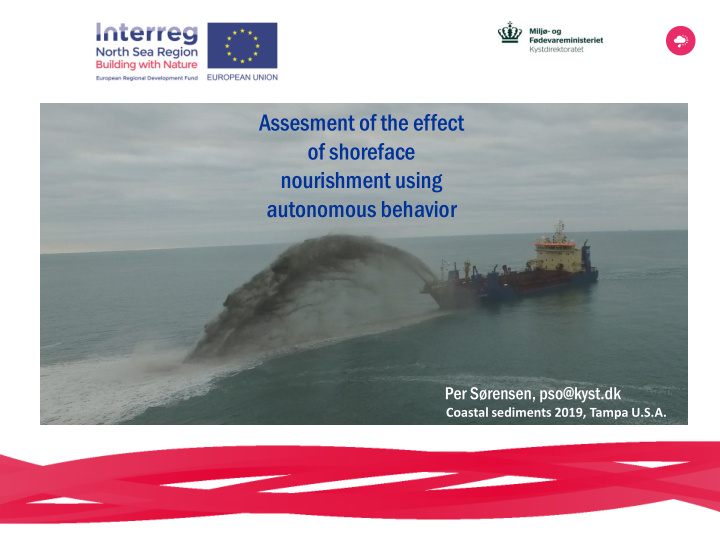



Assesment of the effect of shoreface nourishment using autonomous behavior Per Sørensen, pso@kyst.dk Coastal sediments 2019, Tampa U.S.A.
Safety aim Flood proned Safety buffer area
Autonomous retreat Aim for profile volume Aim No aim Profile retreat [m/year] -2 0 2 4 6 8 5 km
General bar behaviour and nourishments NO No nourishments Some nourishments Many nourishments Line 5350 Line 5760 Line 5450 MANY Offshore Life Migration Offshore Life Migration Offshore Life Migration migration time speed migration time speed migration time speed [m] [years] [m/year] [m] [years] [m/year] [m] [years] [m/year] Bar 1 708 10 71 708 14 51 667 14 48 Bar 2 375 12 31 833 12 69 541 10 54 Bar 3 750 12 63 875 8 109 958 11 87 Bar 4 833 26 32 791 13 61 1167 20 58 Mean 667 15 49 802 12 73 833 14 62 Std. 174 6 18 62 2 22 245 4 15 SOME
Shoreface nourishment 2011: 310,000 m 3 (400 m 3 /m) Net longshore sediment transport 2.1 mill. m 3 /year Shoreface nourishment 2010: 728,000 m 3 (57 m 3 /m) along the showed coast
On shore Deep water energy cross-/longshore transport North South
Common coastal State Indicators
Volume changes alongshore
Bars (0.25 m)
Bars (0.25 m)
Bars (0.25 m)
Bar position nourished area
Total volume
Conclusion and further work • Vital to know a coast autonomous behaviour, which requires a lot of monitoring. • Define monitoring and indicators based on objective • Further coanalysis (EOF, PC ?) Netherlands, Germany, Belgium, Denmark to get a better system understanding. • Include previous nourishments in the analysis. • Perhaps modeling.
Thank you for your attention
More recommend